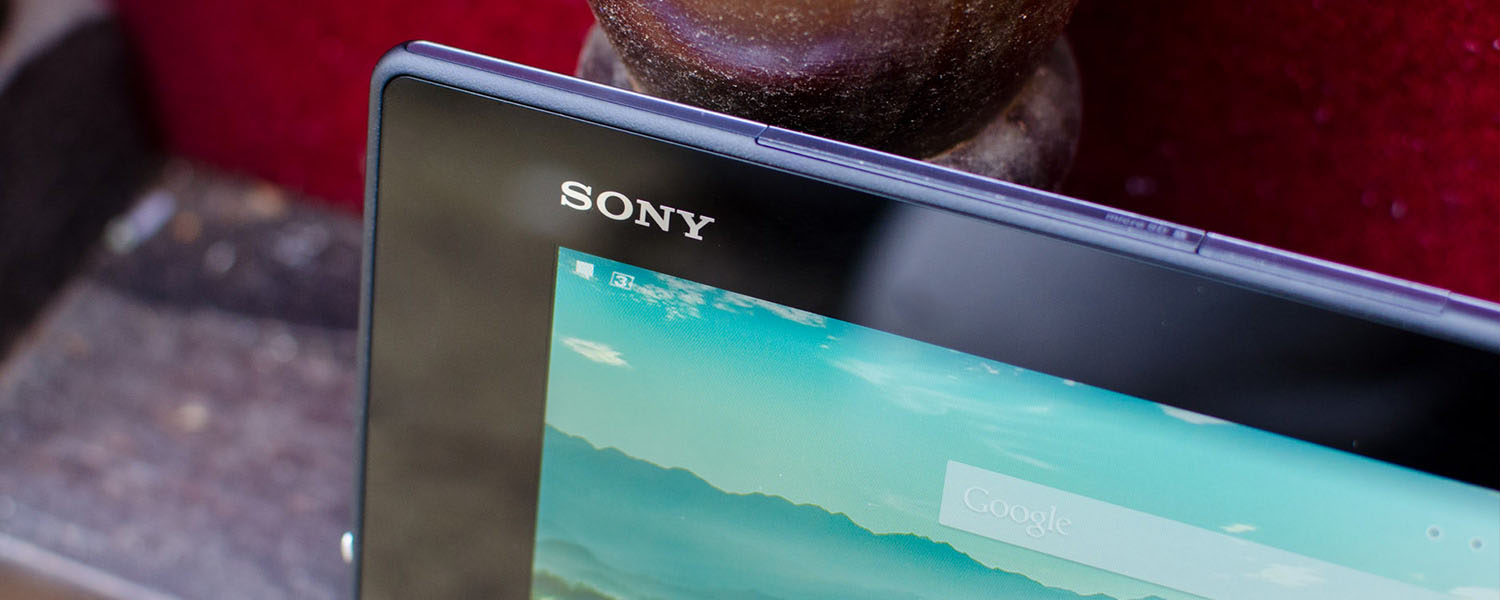Performance
The Sony Xperia Z2 Tablet is one of the first tablets to hit the market that uses the Qualcomm Snadpragon 801 SoC, which is also found in the Xperia Z2 smartphone and other high-end handsets released at the start of 2014. The Snapdragon 801 variant found in the Z2 Tablet is the MSM8x74AB, which is clocked slightly lower than the top-end MSM8x74AC; due to the two variants, you'll either get an MSM8974AB (LTE model) or the MSM8074AB (Wi-Fi-only).
While the MSM8x74AB supports a maximum clock speed of 2.36 GHz across all four Krait 400 CPU cores, the Xperia Z2 Tablet reports a maximum clock of 2.27 GHz. It's paired with an Adreno 330 GPU clocked at 578 MHz, the Hexagon QDSP6V5A DSP at 600 MHz, and a 32-bit dual-channel memory controller sporting 3 GB of RAM with 14.9 GB/s of bandwidth.
There's nothing too surprising about the SoC in the Xperia Z2 Tablet, as I've covered it in more detail in my reviews of the HTC One M8 and Samsung Galaxy S5. It's supported by Wi-Fi 802.11a/b/g/n/ac and Bluetooth 4.0 radios, plus Category 4 LTE if you get the LTE model.
The Snapdragon 801 is mighty powerful as usual, making the Z2 Tablet fast to use. Surprisingly, effects around the home screen aren't as buttery smooth as I was expecting when the default live wallpaper is enabled, but I'll put this down to a software optimization issue on Sony's side. Switching to a static wallpaper rectifies the issue, and after that I had no problems with the performance throughout the interface.
Generally speaking application and game performance on the Z2 Tablet is identical to what I experienced on this year's high-end smartphones that also use the Snapdragon 801. The display is 1920 x 1200, so there's a small reduction in 3D performance when rendering to the entire display compared to devices with 1080p panels, but it's not noticeable on a device that's as fast as the Z2 Tablet.
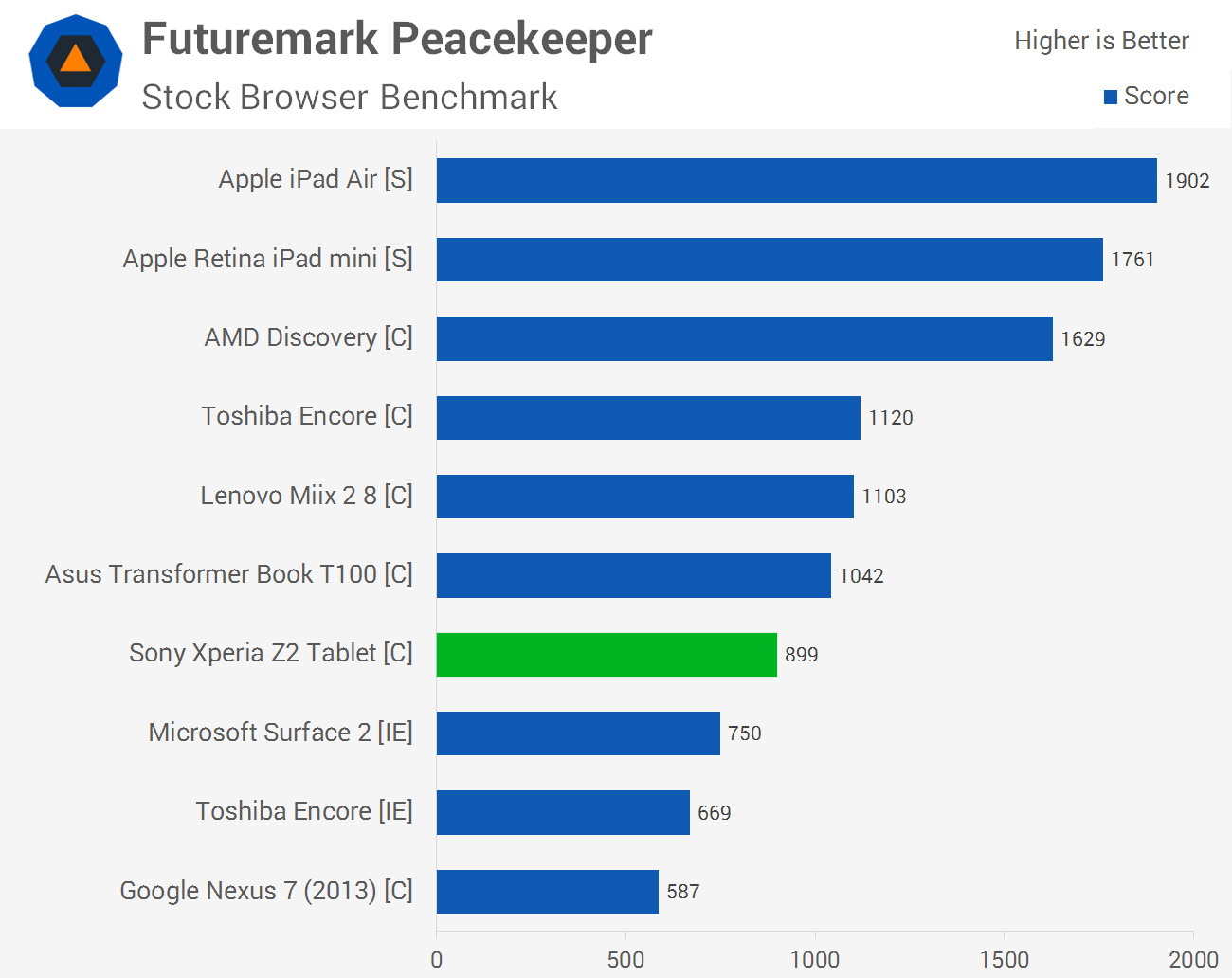
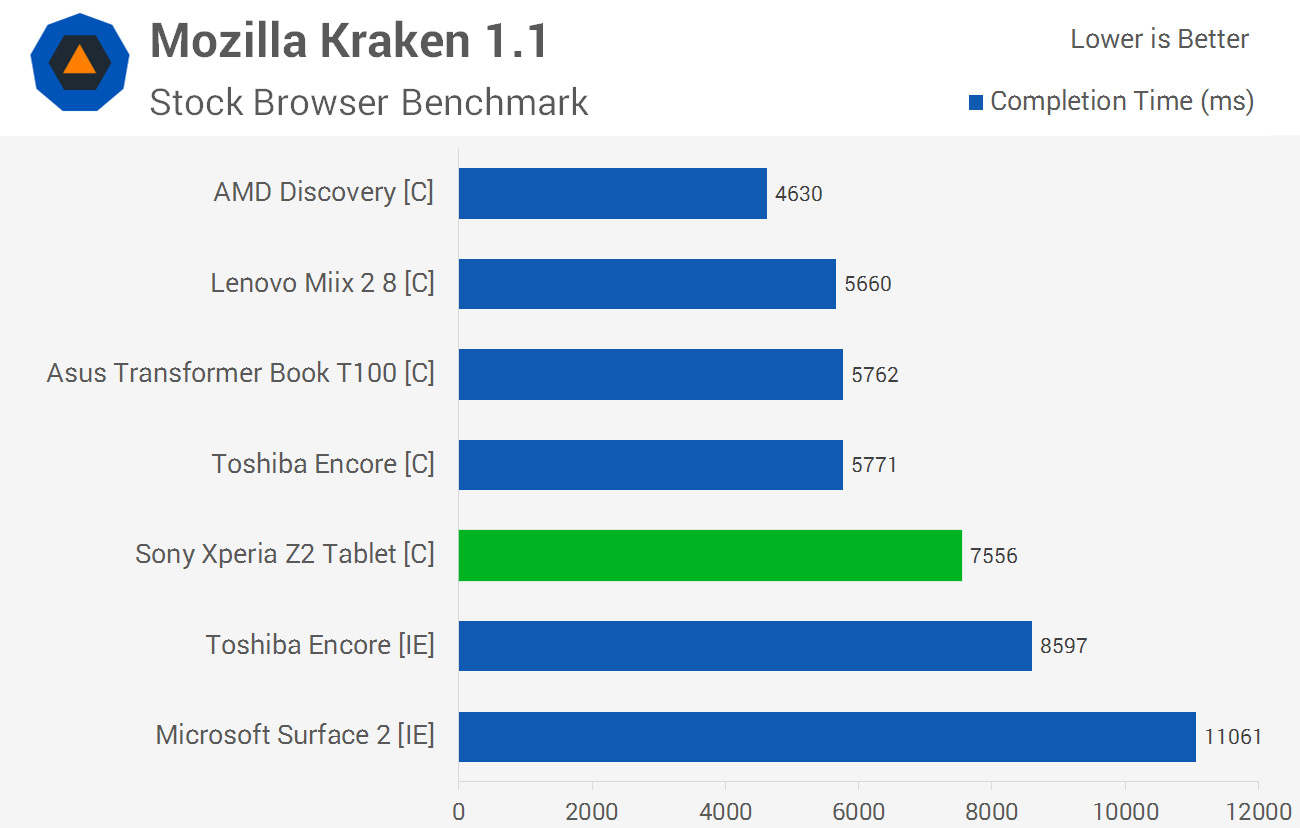
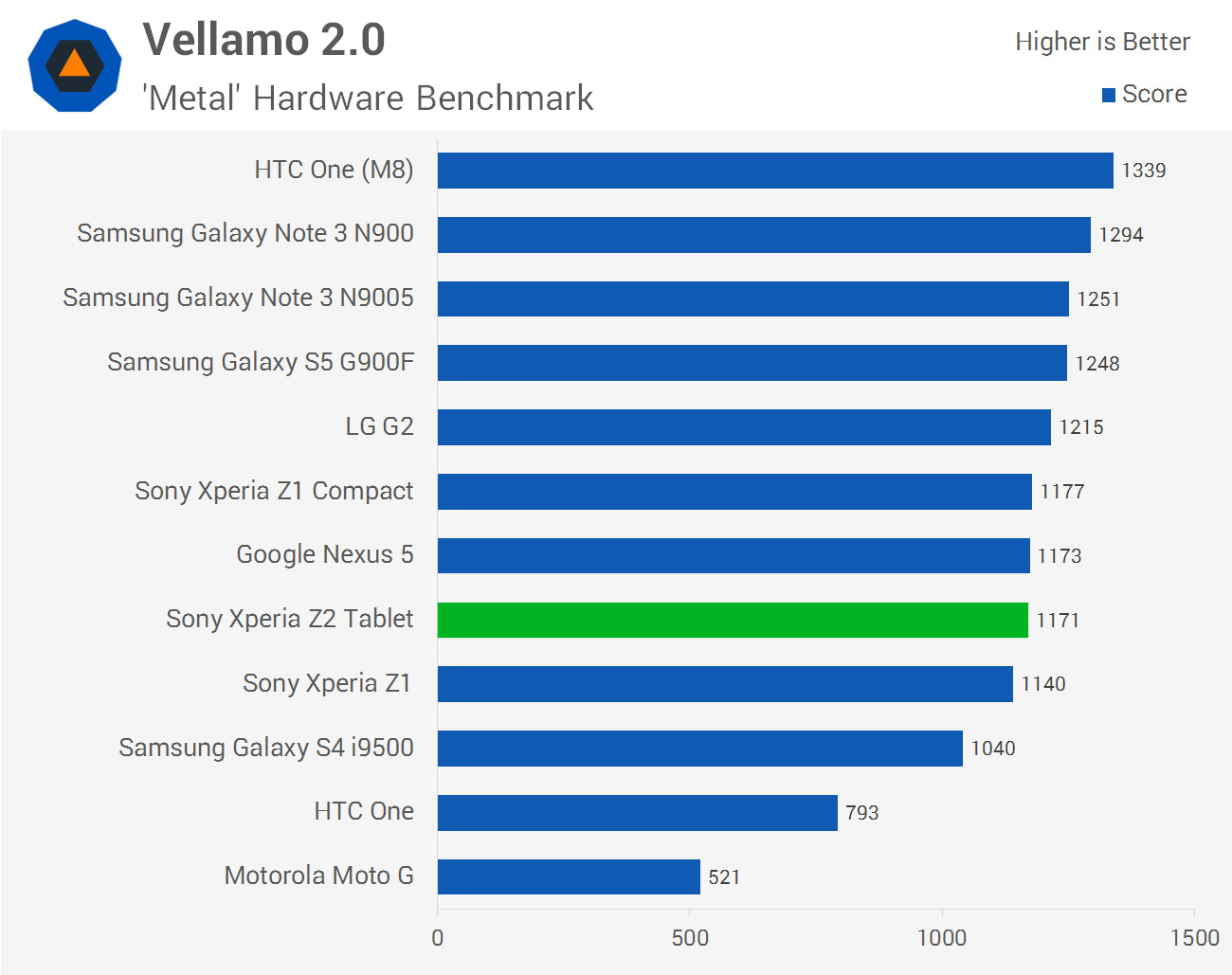
The original Xperia Tablet Z was powered by a quad-core Qualcomm Snapdragon S4 Pro SoC, which is similar to that found in the Google Nexus 7 (2013) which we reviewed last year. Comparing the two devices reveals a significant performance advantage to the Snapdragon 801-touting Xperia Z2 Tablet, although it falls behind Intel's Bay Trail devices.
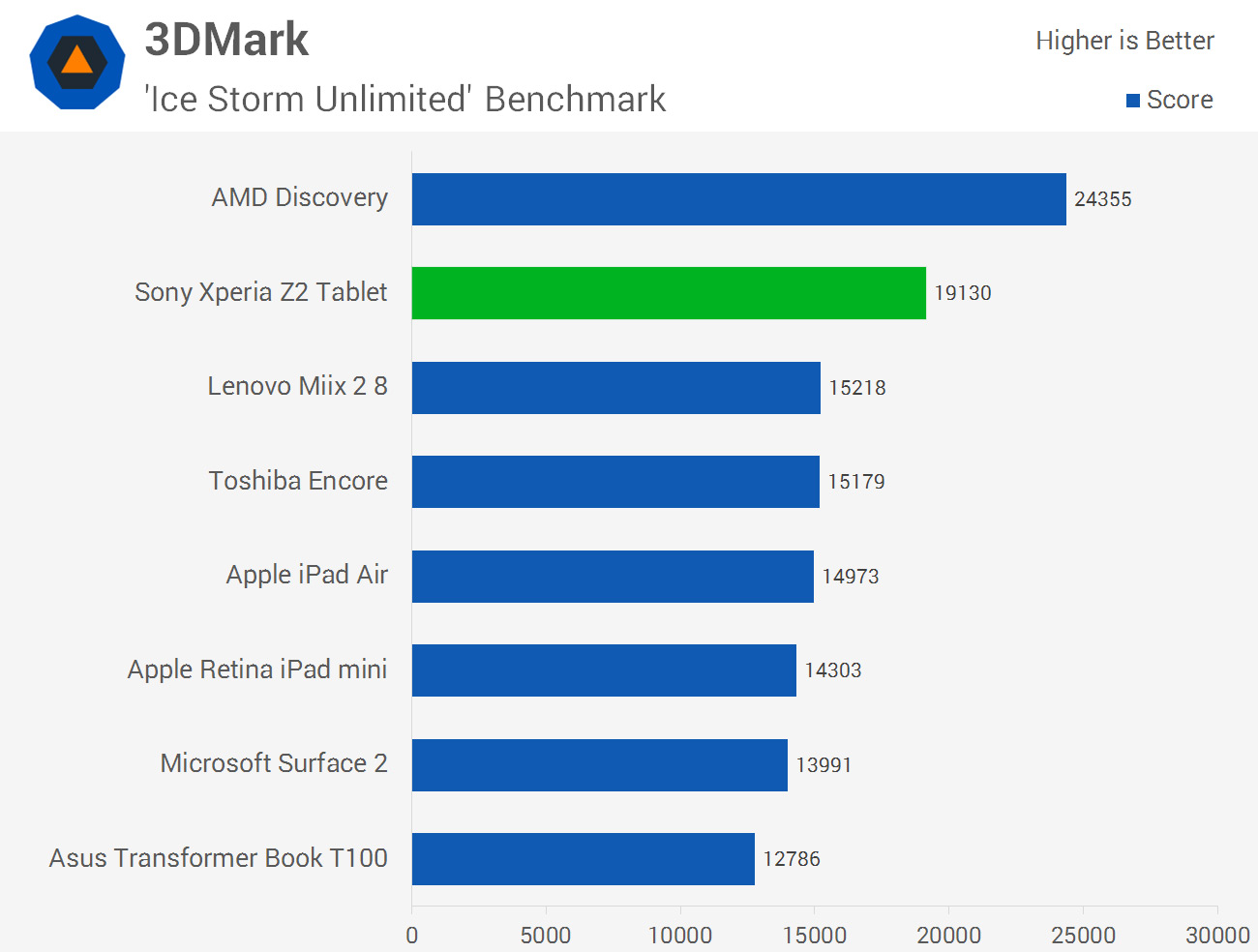
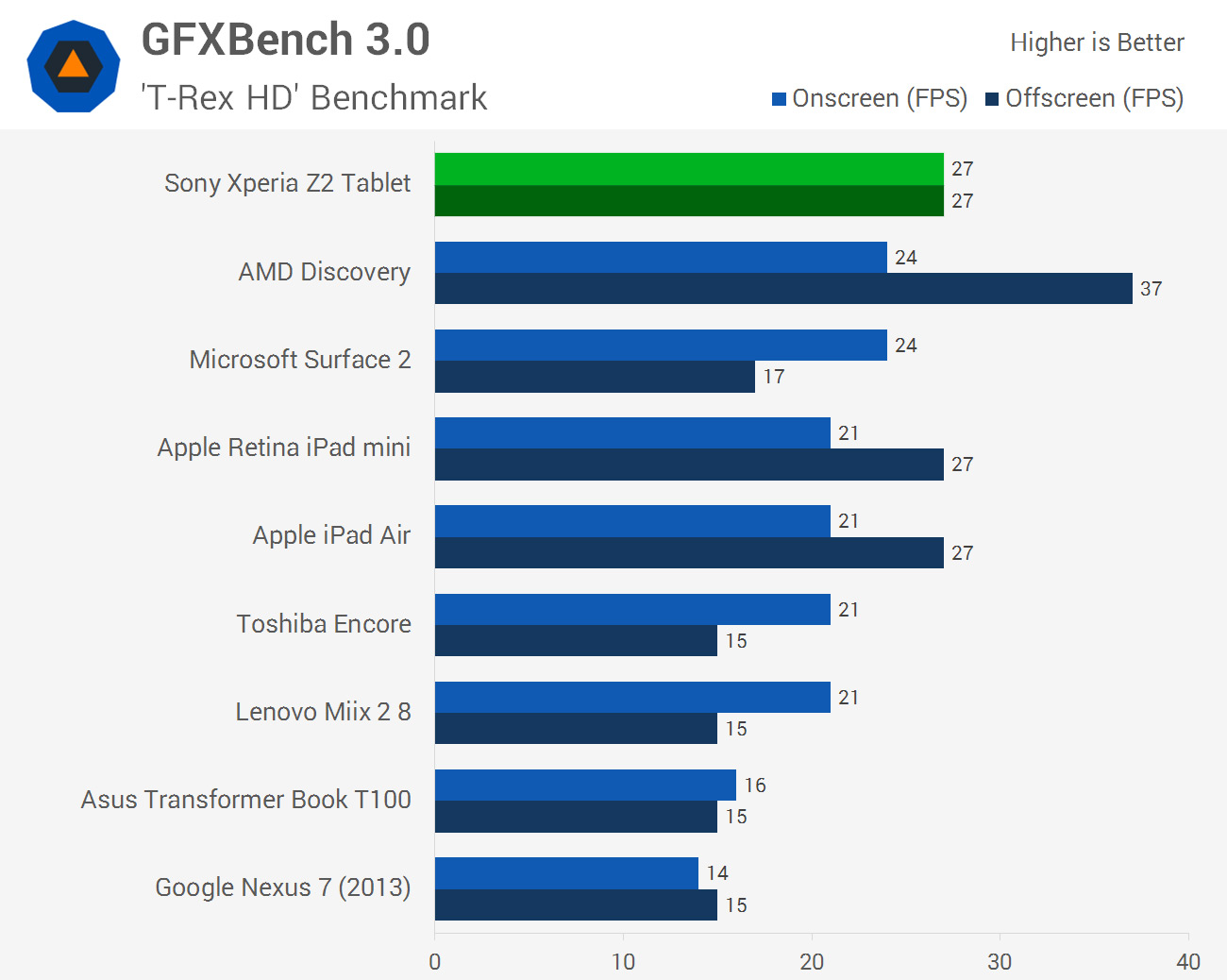
In GPU-centric benchmarks we see the Adreno 330 GPU dominate Intel's Bay Trail offering, although it falls behind AMD's Discovery reference platform that we previewed late last month. These results aren't too surprising considering what we experienced with Snapdragon 801-powered phones, but it's great to see the Z2 Tablet performing well.
Inside the Xperia Z2 Tablet is 16 GB of NAND complemented by a microSDXC card slot that supports up to 128 GB cards. Of the internal storage, 11.2 GB is available to use out of the box, so I'd recommend getting a microSD card for extra data such as videos and music. The space can fill up quite quickly when you're installing large apps like Real Racing 3, but with that microSD card inside, it's less of a concern.
Like other Snapdragon-powered tablets, I had no trouble using the 5 GHz Wi-Fi 802.11n capabilities to stream videos from my home media server to the tablet. 1080p content can easily be viewed from a local network source without lag or stutter, while browsing the internet was equally no trouble. Other connectivity options, such as Bluetooth, GPS, and NFC worked well, although it has been some time since those features have failed me.
It's great to see that Sony has put a small NFC logo on the back of the tablet where you can find the NFC chip. As the connectivity is so close range, sometimes it's hard to get NFC working between a tablet and another device when you can't find the right spot on the tablet's body. This is no issue with the Xperia Z2 Tablet.
